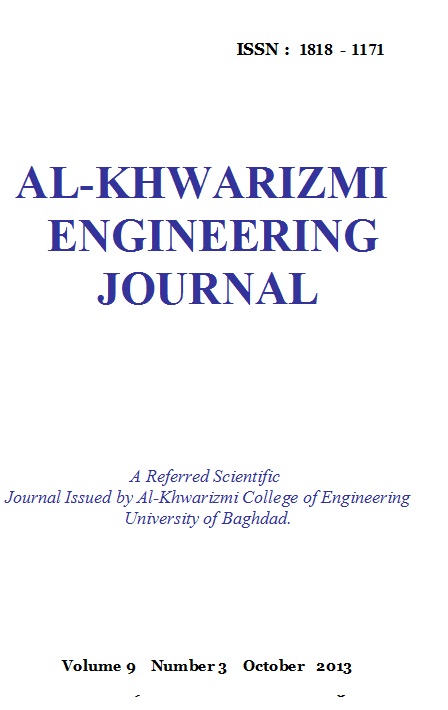Influence of the Applied Potential and Temperature on the Electrode position of the Lead Dioxide
Keywords:
Electrodeposition, Lead dioxide, Alpha-lead dioxideAbstract
The excellent specifications of electrodes coated with lead dioxide material make it of great importance in the industry. So it was suggested this study, which includes electrodeposition of lead dioxide on graphite substrate, knowing that the electrodeposition of lead dioxide on graphite studied earlier in different ways.
In this work the deposition process for lead dioxide conducted using electrolytic solution containing lead nitrate concentration 0.72 M with the addition of some other material to the solution, such as copper nitrate, nickel nitrate, sodium fluoride and cetyl trimethyl ammonium bromide, but only in very small concentrations. As for the operating conditions, the effect of change potential and temperature as well as the time on the deposition process was studied.
The results shown at the end of the experiments that the change in the applied potential to the cell and electrolytic solution temperature had the greatest influence on the cell current, anodic current density, anodic overpotential and the amount of lead dioxide deposited on the anode.
Downloads
Downloads
Published
Issue
Section
License
Copyright: Open Access authors retain the copyrights of their papers, and all open access articles are distributed under the terms of the Creative Commons Attribution License, which permits unrestricted use, distribution, and reproduction in any medium, provided that the original work is properly cited. The use of general descriptive names, trade names, trademarks, and so forth in this publication, even if not specifically identified, does not imply that these names are not protected by the relevant laws and regulations. While the advice and information in this journal are believed to be true and accurate on the date of its going to press, neither the authors, the editors, nor the publisher can accept any legal responsibility for any errors or omissions that may be made. The publisher makes no warranty, express or implied, with respect to the material contained herein.












